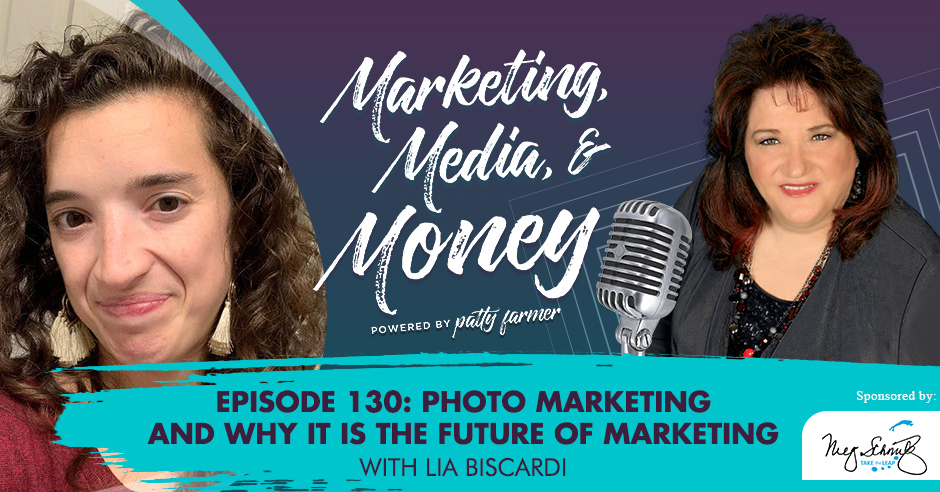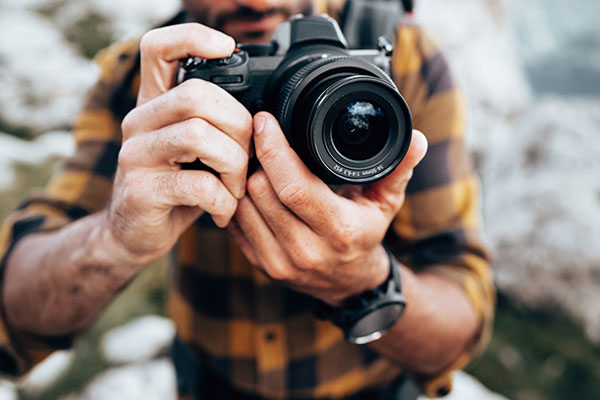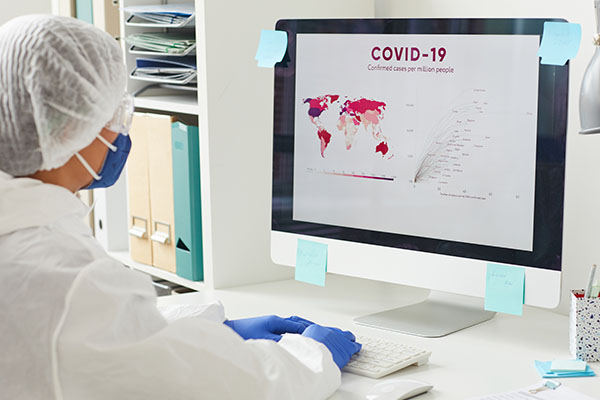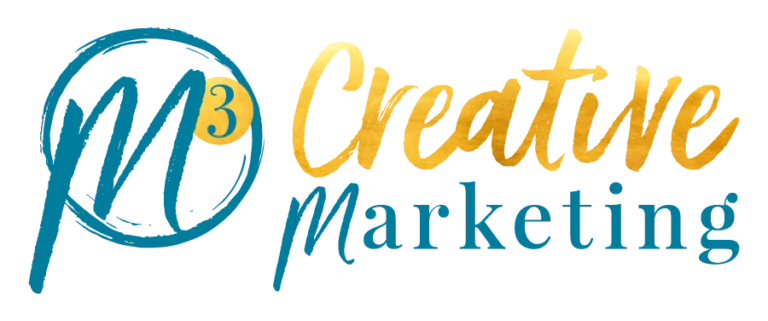
Click on the icon to listen to this episode on your favorite podcast platform.
Lia Biscardi's Free Gift: Caption Guide For Instagram and Facebook
Lia’s #1 Marketing, Media & Money Strategy
DID YOU LIKE THIS EPISODE? PLEASE GIVE IT A RATING AND REVIEW
About Lia Biscardi
 Lia is a visual storyteller and product photographer who works with product based businesses and specializes in marketing the story of your products to capture the hearts of your consumers. With over 10 years of photography experience, Lia assists new and current businesses boost their sales through human connection. I educate entrepreneurs on how to tell their story through visuals and to utilize their network to sell their products.
Lia is a visual storyteller and product photographer who works with product based businesses and specializes in marketing the story of your products to capture the hearts of your consumers. With over 10 years of photography experience, Lia assists new and current businesses boost their sales through human connection. I educate entrepreneurs on how to tell their story through visuals and to utilize their network to sell their products.Resources and Important Links
Grab Your Free Marketing, Media, & Money Assessment
Meet Our Sponsor
The Marketing, Media, & Money Podcast (and magazine) would like to thank our sponsor Meg Schmitz, founder of Take the Leap franchise consulting company.
The franchise industry is booming as people look to diversify their income streams with essential businesses, without having to quit their day job. If you have ever considered what it would be like to own your own business with the security of a solid brand behind you, schedule a call with Meg. The conversation is free, and the insights are priceless. https://MegSchmitz.com
Photo Marketing And Why It Is The Future Of Marketing With Lia Biscardi
I'm looking forward to sharing this episode’s industry expert with you. We're going to talk about something a little bit different, like marketing, if you have a product-based business. I know a lot of times we talk about service-based businesses, but in this episode, we're going to flip it a little bit. There are those of you out there who are product and service-based, so you're going to luck out. We're going to talk about photo marketing, the future of marketing, and we have a guest who's going to tell us all about it. Let me tell you a little bit about her.
Lia Biscardi is a photographer who works with product-based businesses and specializes in marketing the story of your products to capture the hearts of your consumers. With many years of photography experience, Lia assists new and current businesses to boost their sales through human connection. She educates entrepreneurs on how to tell their stories through visuals and utilize their network to sell their products. She's a visual storyteller, product photographer, and an all-around networking coach looking to help product-based owners to be successful in increasing sales. We're going to jump into that. Thank you so much, Lia, for being here with me.
Thank you, Patty, for having me on.
I always believe that there's always this meandering story when we are an entrepreneur. It's not like we woke up one day and said, “I'm going to be a visual storyteller and a product photographer.” I know something somewhere you found that to be your passion and purpose. When did you wake up and have that a-ha moment where you said, “This is my niche, and this is what I'm going to do?”
It's a long story, and I don't want to talk about the whole story. Long story short, I used to teach Science. I used to be very hands-on. I always loved photography, but I always did photography on the side. I knew it was a passion of mine, but I wasn't sure how to make money with it. Right before the pandemic hit, I moved to a new town. I was like, “I want to meet other business owners, but I also want to make money out of it because I'm not sure I want to teach anymore.”
The idea hit me one night, as most small business owners have grand ideas in the middle of the night. I was thinking about switching my niche of landscape photography to commercial photography. I reached out to local business owners as a way of networking. I offered them a free photography session. I said, “I don't have experience. I would love to get some experience. Can we work together on this?” They took me up on the offer, and here we are, years later, with now all this expertise. Throughout the journey, I learned that telling a story was way more beneficial than just posting pictures on social media.
That's true for anybody, even though taking pictures and telling a visual story of a product, what's good about that is it's a specific product for you or at least branded for you. A water bottle is a water bottle, maybe or maybe not. It's all in how you do it. Marketing is marketing, or maybe not. It all depends on how you do it. I believe how you do it is where the story is. The story is what makes people know that they have the same vibe as you and know that of all the photographers, marketing people, or whatever we're talking about, you are the one that they want to hire.
I love that. As a speaker, I know how important a story is. It tells everything. As somebody who does branding, the story is everything. I believe more and more now in the marketplace story is almost the currency if you combine that with relationships. Relationships plus a story together. Those are two things that make up that human connection that you were talking about. It's that heartfelt connection that makes it easier for people to pull out their wallets.
There's a whole concept to my business idea that humans need to connect with each other and need to put the social in social media. We understand that we have to take in the content and that we need to create content, but if that content is not valuable to the human reading it, then why are we posting that content? Human connection is huge in marketing, especially in service-based, but people undervalue how much human connection means in the product-based business world.

Photo Marketing: Humans really need to put "the social" in social media. Because if the content is not valuable, why should we read it? So human connection is huge in marketing.
It's important because when we were creating content, whether you were service-based or product-based, we used to believe that it was all about being robust, like giving lots and lots of value, giving all this robust content. As people spent more and more time on social, we have a snack-size mentality now. We want everything quick and easy and to get to the point.
Even if somebody sent us a newsletter that was nice, robust, and had lots of great content, we would save it so we could come back to it, which we probably will never find the time to come back to it. It's important to snack size your content. With that said, also in the service-based world, and then we'll flip it, it's all about stopping the scroll. That's the whole thing.
I know that in marketing, that's what I work on with my clients about how you stop the scroll. I also feel like because of the advertising opportunities that people have, some of the ways that people do it, in my opinion, don't always do it ethically. Sometimes the visuals they use don't have anything to do with what they're selling or offering. They just know that we love seeing those visuals.
I saw this baby visual. Once people love babies, pets, or other things that light people up, that makes us stop. I'm not saying never use it. I'm just saying the story is the glue that ties the two things together so that it makes sense, and people's heart says, “I love that. That's a great story,” and when they think about why you told the story about how that makes absolute sense.
Whereas if they took that time to do it and then got to the end of the story about kids and then found out that you were selling saw blades, tools, or something that might be like, “That was a great story. I took five minutes to read it,” and they wouldn't be very happy with you. I know that in the product world, that may be true as well. How important is stopping the scroll when you are product-based versus service-based?
I believe it's more important. If you think about service-based, when people or clients are wanting to work with you, they're buying you because you're the one who is offering the service. You show your face a lot. You tell stories about your results with your clients. You tell them about who you are, your vibe, and your morals.
People forget that in the product-based world, unless you're a Big Box store, like Amazon or Best Buy, people already know what you sell and do. They want to know when the next sale is going to be. In a product-based world, when you're a small business owner, you have a lot of competition. I work with a lot of self-care wellness and home decor clients. I always tell them, “You have to not sell the product, but the idea of the product of why it's important that someone has it.”
I tell this to people all the time. I don't need to have 50 different types of candles in my house, but if that candle is meaningful to me, it's the reason I buy it. It's always the grandma's kitchen story. It takes a minute. What people don't realize is when you take a picture of a candle, you want the ambiance that that candle's going to give that person to show up in the photo. You don't want to take a picture of a candle on a window sill with a rainy cloud in the background. It will be dark, hard to see the label and what the candle looks like. It's a terrible representation of what a candle does.
Can you take a photo, showing that the candle's going to bring you happiness on a gloomy day? Yes, but you need to set the scene. I tell people all the time, “It's like romance.” Usually, if someone's going to propose to you or you're going to have a very romantic night, you set the scene. You dim the lights, light these candles on the table, and have this homemade meal. It's the same thing with the photo. You have to set the scene so the people feel like, “If I buy this product, then I'm going to feel that same way.” That's why a lot of people who have candles have these bright airy scenes because they want to tell people, “This candle is important to make you happy.”
If somebody is going to go have a massage, for example, and they go to Google and look through, and a man candles play a big role, for example, in what a candle can do for the experience and how the aromatherapy or whatever the case may be, I can't even tell you how many times I have chosen a place by the photograph that they use to depict my experience because I want to know about my experience. They say a picture paints 1,000 words. It's important to make sure that if you have that type of product, using your example of a candle, it doesn't matter how beautiful you said it is. It is what is it going to do. I know, for example, somebody was wanting to sleep, and so there was a candle that was calming and relaxing. You could use that in a picture.
If something is going to renew and energize you, you could use that in a picture if it was romance. I know the reason why it's funny that you picked that one. It's because I spent one morning looking for a massage oil to mix with my lotion. There were so many of them. There were Renew, Energize, and Passion. There were many massage oils, and they all were in the same bottle but they just had different names on them. I was thinking, “If I was going to take my shower at nighttime and do it, I'd want this one. If I'm going to do it in the morning, I'd want this one.” I thought to myself, “The pictures that they used of the product made a difference.” It's funny that you picked that example.
I had that experience. The picture did do it for me. This doesn't sound as sexy, but props matter. I have seen it. It's like when you see TV shows, specifically Good Morning America or any of them, and they have somebody on there that has a product. How the product is laid out makes all the difference in the world, whether that's going to sell. Even if you think about it, if somebody watches Shark Tank when they get up there and give their pitch, and over to the right, they've got it all displayed and whatever.
In those two seconds, we're looking at that display. I don't know what the stat is for how much of a percentage of our decision is already made, but a lot of that decision is made if you hear the Sharks always talking about, “This product looks good, but this doesn't tell me. I don't get a feel for it.” They're always looking at the packaging. If people are thinking about packaging, how to position in the marketplace with photos is absolutely critical. Hiring the right person such as you that's going to do photos is important. To be able to say that you are also a visual storyteller is important because it seems to me that when you are posting visuals, it's not just about the product. It's about why you should buy the product.
If anyone scrolls through my social media, all I talk about is value and, “You need to do this.” People are always saying, “I want to sell my product. I don't want to just tell people about my product and why it's good. I want to make sales.” I said, “People are not going to buy your product if they don't know how it's going to help them. Only 3% of people scrolling are impulsive buyers, which means you need to stop the scroll, gain their attention not only in the photo but in the caption, and also draw them in.” That story that you tell and the image that you take resonates with the person so they make that buy.
For example, you talked about babies and dogs. Anytime I'm scrolling on Instagram and there's an interrupted ad, this is something about a dog, a dog model, or something, I'm like, “I have to buy this for my dog because I love my dog like a child,” because it's dog related. It's also how they set the scene. They show puppies instead of older dogs because people love puppies more than older dogs. That's just an opinion. People use that in advertising because puppies are just cute and adorable.
It's the same reason why they use newborn babies instead of grown men because grown men, unless they're super attractive, nobody's going to want to buy something that's baby related with the grown men in it. You have to be very strategic. Telling people why they need it is convincing them that they need it. With candles, I don't need 50 scented candles, but every candle that I buy has a different scent to it, which reminds me of a happy time.
The reason I keep bringing up candles is I bought a candle not so long ago. I was eating lunch at the kitchen table, and I lit it because it's a birthday candle smell. It reminded me of a birthday cake. I love birthday cake. I was like, “I might as well have that while I'm eating lunch to give a good smell to the kitchen.” It's something that people will strike a match and light in a moment. It's not just candles. It could be anything. It could be specific dog food because it's healthier for the dog. It could be specific snacks for you because it's healthier. You have to tell people why that product and your product are important.
That's good. Let's stick with the dogs because we're on the dogs because it's a good example. We've all seen the sad commercial about all the dogs when they're asking us to pay money for all those sad dogs. You notice they don't use cute little puppies in that story because that's not the story. The story is, “Look at these animals that people have mistreated that need our help,” and the why. I cry every time I see that one. It's sad. When somebody wants you to purchase a service where they're going to deliver the things to your puppies, to your house, now it's a whole different story because now it's all about you opening that door and your dog's recognizing it, and now they know there's something in it for them.
Those are all visual stories. We're sticking with candles and puppies because you can't go wrong with them. Each one of those things does something different. To your point about the candles, that's so true because, as a general rule, I like the musky smoky type of scents, sandalwood, and some of those scents. However, I have this one candle that's honeysuckle because when I was a kid and my mom would come home, she was like an Avon representative or something back then.
She used to have these little demos stick perfumes, and they smelled like honeysuckle. My mom passed away. Every time I smell honeysuckle, I think of this memory with my mom. People evoke. If you can evoke an emotion, whether that emotion is, “I'm so busy. My puppies would still get to have the toys and food they wanted. I don't have to worry about going to the store,” or whatever that case may be, even like, “Why they make us feel we should use these kinds of disposable diapers versus those kinds of disposable diapers,” whatever the case may be, that is photography and/or a story that they are telling us.
In service, based businesses, you do it, and you can tell that story, but the product photography, like once we see the picture, we're already starting the feeling, then you're telling us the story, which cements that to us and moves us along in the process. I'm loving this topic, and I've never had anybody on my show talk about this topic. How are there certain things that we see, and when we see them, it makes us go back to that place over and over again?
The more you see it, the more you know that when we see this, it makes us do this, “This is what happens, this or that.” That is important, especially when you are targeting a certain market. I'm sure that nurses or whatever, probably can't have candles, but there are certain things that are like clean linen. There are certain people for whatever reason. We love certain things. For me, I loved your birthday cake one, but if I was eating lunch and I was smelling a candle that smelled like birthday cake, it would be hard for me not to have dessert. That would just evoke that emotion for me. Different things do that.
When you're thinking about who your target market is, and specifically since I'm in marketing, who your target buyer is, which is even more important than your target market, you have to keep the story and the why, but how would you go about from your point of view? I could give you my point of view all day. From your point of view, if you were product-based, how would you use that when you're targeting your market, you're storytelling, trying to stop the scroll and you're a small business owner and entrepreneur with all these things going on, and you're trying to target your market and/or do market research too? That would be an important one. How do you use those things when you're working with someone in order to help them increase sales?
I call them series. If we want to continue with the candle idea, that would be great. I've had past clients who don't know who their ideal client is. It's hard for me as a product photographer to take photos if they don't know who their ideal audience is. Part of my skills in the photo marketing side is I help walk them through that before we even do the product photography so that I have an idea who their client is. They say, “I want to market to these people because I have these products.” What we do is we call it a series. Let's say they have four separate, which are all under the same umbrella. For example, you have candles, wax melts, fragrance sticks, or room spray. If you have those four things, you may be targeting four different people.

Photo Marketing: If you don't know who your ideal client or audience is, it's going to be hard for a product photographer to take photos.
The room spray could be helpful to moms who have kids in sports. Their equipment smells all the time. They could spray the bag or something so it could smell better. Whereas the candles and the wax melts are meant to burn in one location. What you do is when you're creating your content, you block it up so you're repeating it over and over again. For two whole weeks, you talk about the same product and have different product photos of that product. You talk about it through a story. You then switch to a new product and go back to that original product. You keep repeating yourself, but it's not like you're posting the same picture seven days in a row with the same story. I heard on a podcast, “You are the only one that sees 100% of your content.”
People may miss something. Even if you post on Monday and Tuesday, very similar stories, they may only see Monday and not see Tuesday. When I'm helping a client with that, it's also why I tell people when you photograph a product, you photograph different angles of that same product because it's the same product but different pictures. People may stop scrolling because they're like, “I saw a picture like that the other day. Is it the same thing?” They'll click on it, read about it, and be like, “It sounds similar. I'm not sure,” then they'll see another picture that's very similar, and it starts capturing their attention. What's very important is repetition, but not repeating yourself and posting the same content.
Not only that, but my marketing brain said that it could be that somebody loves wax melts. Maybe they don't like to burn candles. Maybe they have little kids or whatever, but they love those sprays. They love to spray those sprays on their pillow or whatever the reason is. Everybody has their preference. Also, this is where you can increase sales because I know for me, if I saw that they sold sandalwood, the very first thing I'm going to do is, “What else do they sell in sandalwood?”
“You have a candle in sandalwood. That's great. Maybe or maybe not I am looking for another candle. However, maybe I'm looking for a spray. They have a spray.” I was thinking I might want to get a spray, “I will get the spray. Maybe I will get the wax melt.” As long as I'm going to get the wax melt and the spray, I might as well go ahead and buy the candle. That's how we buy. We bundle. We're used to batching, bundling, whatever the case may be, whether you get a discount to that or not get a discount, whatever their product model is for sales. The fact of the matter is sometimes we want to get, “We love wax melts,” and maybe when we get to wax melts, we're like, “I love this scent,” and they buy five wax melts.
Whatever the case is, there's always the ability to increase sales. Sticking with your story, if you are telling a story based on emotion, like happiness, joy, right, relaxation, stress relief, sleep-enhancing, whatever the case may be, we all have most of those things at some time. For me, if I was going to buy a product and I saw, “I love these candles,” and then I saw they had those other things, I might be more apt to buy them if they told me a story about, “Here's when you feel this.”
We don't always feel that. Sometimes we feel this. When I am buying products, I want to know the story and why when I'm buying it, but the company itself, I also want to know what their mission is if they have one. What's their mission? Do they have a cause? What are they passionate about? It's because that makes me feel good. I'll give you a perfect example, and it's not candles. One time, I was sick. I posted on social.
One of my friends saw that I was sick. I had said something in the story on social that I wish my mom was here because whenever I was sick, she would make me homemade chicken noodle soup. When I'm sick, it always makes me think that my mom's not being there makes me sad. Two days later, the doorbell rings. I opened it up, and it was this package. Would you believe there's a company that makes homemade chicken noodle soup, sends it to you, and it comes with biscuits, a ladle, and all this whole thing?
I was like, “Wow.” My friend sent that to me, but here's what it did for me. When I went and looked up the company, the woman who had the company, her mom had made her chicken noodle soup and had passed away. She took her mom's recipe. That made her feel good when her mom and her mom weren't there anymore.
Lo and behold, not only do I buy their chicken soup, but every single person I know, whenever I hear somebody tell me or see on social that they're sick, I literally send them that soup because I feel like it's not just about the soup, but the story is so good. Sometimes when you can share a story of why you do what you do, even if there was more than one soup thing, her story was so good that even if somebody else had better chicken soup, I'd buy hers anyway because I love the story that's attached to it. Can you speak to that?
I want to go back to one thing you were talking about before market research and how you were talking about when you're going online and you're trying to see a story about this makes you feel this way. It's important when you do market research. Let's go with the soup example. Which soup makes you feel better when you're feeling sick? You then do a poll on your social media or what scent you like to smell when you're sick. You do this, and that can help with your description and your story.

Photo Marketing: If you want to know what soup makes you feel better when you're sick, do some market research. Take a poll on social media because those results can help with your product description and story.
I know a lot of people that don't tell their story of why they started their business or what their mission is because people are heartfelt about it. For example, there is a former student of mine. His mom had another son who's autistic. He doesn't do well in social surroundings, so she has to keep him busy at home. What she did was had him start drawing things and then selling them to other people because he was very good at art.
Their story was he was selling the artwork to help donate to autism research or a local foundation. I can't remember which one it was, but that's why people will buy the art because not only is it someone who is autistic, but he is on a mission and so is the mom to give that money to a charity because they want to make sure they help other kids. It's the same thing with the dogs, like in that sad commercial. A lot of people are drawn to purchase that because they think they're going to be helping those dogs in need. It's the same thing when you see the UNICEF commercial with the kids in Africa. You're like, “I want to donate to them and help them,” because it's that heartfelt that those heartstrings.
That's why I always tell people that telling your story and why through your photos and your caption is important. People are always afraid to bring their kids into this situation. I don't have kids, but if I had kids, they would be part of why I keep going. People are always afraid to show their kids on social media, but it's part of their story. It's the same thing with their products. A lot of people are afraid to show it. When they first started making their products, they didn't look as well as they do now.
Showing that progress is part of your story, your mission and that you keep going. That's also why I tell people they need to have professional photos because they need someone on the other side to see their story. Part of my mission is helping business owners find self-confidence. What I tell people is not only do I take product photos, but I take the photos as people are making them. I work with local businesses and take behind-the-scenes photos so that they can see the picture and be like, “That's me. I'm making that product.”
Behind the scene is part of the story because we've all heard the story. Look at all the big names. We could be talking about Microsoft and whatever. A lot of times, it's like, “We were packaging these up in our garage. Now we have a packer and whatever. We started out with this, and this is what we do with our kids every Saturday. We pack these things.” People can get behind that. We want to do it, and photography is. I'll give you another example. There's a corner store. It was 7-Eleven. They are franchised.
It's out of my way, this franchise store, and they posted a photo of food, fruit, juice, and milk and put it on social and said, “We know that a lot of children eat lunch at school.” Maybe that's where they get part of their food, and now they don't get to go to school. They're going to school at home. What this store is doing is every day, if you're eighteen or younger, from 11:00 to 1:00, if you come to this store, they're going to let you choose from that food, pick a piece of fruit and a drink for free to feed those children. I was like almost in tears when I saw it. 3 or 4 times a week, my husband stops to get things that we could get at the grocery store just so we can support that store for doing that.
When I posted that, I said we should all support them. Everybody in that neighborhood now does. They should all do it because it was fabulous. When people see you do good for others, they want to support that. Maybe they can't get behind their cause. Maybe they can't start a 501(c)(3) or any of that stuff themselves, and maybe they can't even afford that monthly thing to one of those other things we talked about, but they can go to 7-Eleven and buy milk or whatever. If you can take good product photography and attach a story and evoke emotion, whether that emotion is a happy, sad, journey, adventure, or whatever the case may be, that's going to help you.
It's important because COVID showed us that we have to support locals because the big chains can survive without the emotion part. When all the local businesses come together for that one common mission of growth in the community, it's a huge part. People are always like, “I have an iPhone. Why do I need you?” I said, “It's not about the photo. If you take the photo out of it, it's not that.” I'm going to help you visually capture your story so all you have to do is tell your story in words because not everyone can capture this story using a picture. A picture is 1,000 words, and people don't know how to do that.

Photo Marketing: COVID really showed people the importance of supporting local brands because the big chains will survive. So every local business should come together for a common mission.
It's important that people have a professional photographer. If you think about how long it takes to take a photo, edit the photo and then post it on social media, you're wasting valuable time when you could be doing other things in your business. It's like hiring and outsourcing everything else. Outsourcing your photography is just another way for you to save time in your business and also help with that story truly showing your following who you are, what you do, and why it's important they support you.
Here's one of the things I did during COVID when we were all at home and we weren't leaving and couldn't get out. We couldn't do anything, and this photographer was posting on social. It was iPhone photography, how to become a better photographer with your iPhone. I'm not a very good photographer. My husband has all kinds of cameras, filters, and all kinds of stuff. That's his jam. I just point and shoot with my phone
This photographer said that he was giving 90% off. What my husband and I did during COVID was when we would get out to get fresh air, we took our cameras, and I practiced all the things he said. I have to tell you I have such fondness and what it takes to take a photo because I was one of those people that said, “I don't want to take a picture of anything unless there's a person in it.” Now I understand the whole difference between doing things and how you can look through the spokes of a wheel in front and all the different ways that you can do things.
Now, all of a sudden, I have a new appreciation, but now I notice everybody's photography in their photos for business. I don't know if I would've noticed before. I'm sure I did notice, but I notice even more now, and I match up the story. I know that I'm in marketing, but now I look at things and say, “That was a great marketing thing right there that they did. That was good that they did that.” It does matter. The fact of the matter is that you have a good product and you're just trying to sell your product and get it into the right hands to your target audience.
A product photographer is so important. If you have an office and are an entrepreneur, have them come take pictures of you at your office so people can see you in action. What that look like if somebody hired you, even if you're service-based? There's a way to be able to stage that too. That is important. This has been a fascinating conversation. You are an expert. The whole thing with the story is important. I know my audience is going to want to connect with you. How do they connect with you easily?
The best way is my website. It has connections to everything that I have, all my socials, my podcast, my email, and everything which is ChromePhotoCo.com.
Because of everything you've talked about and the gift that you're giving, I'm excited that you came with a gift because this is a fabulous gift. Tell us a little bit about the gift.
I'm offering a Free Caption Guide. Everyone is like, “I already write my own caption. Why is this any better?” This helps you start your own story-capturing caption. It helps with that story already so you could provide value. It's a formula that helps anyone who's afraid to write captions so they're not just writing the same caption, “It's sold for this much. DM me to purchase.” You want to go way above that.
Even if you've been in business for a couple of years now and you still haven't gotten the hang of social media, this will help you with Facebook and Instagram. It helps with that connection. You want people to engage with your photos and captions by liking them or commenting below. This will help you. It's a simple formula that you can use for any caption on Facebook or Instagram.
This is the portion of the show that I like to call the Open Mic Portion. I would like to invite you. You've given us so much value, but if I asked you what your number one marketing media and money strategy is, what would it be?
I tell this to every show that asks me a very similar question, whether it's business or marketing. You are not alone in your journey. I'm talking to you in the audience. Focus on what your audience wants to see. It's not just because you want to post something or tell them something. You want to make sure you focus on your audience because that is who is going to be your customers or clients. This can go for service space too. You want that human connection. In order to understand what they want, you need to do market research frequently. I can help you with that as well. I also have a freebie for that if you want help with that. Head over to my website for that. Make sure you post content that relates to them and is a value to them, not just you.
That is a great strategy. You double-dipped in the freebies. We love gifts. Thank you so much for being here with me. This is a topic that I don't think it's talked about enough. I love the candles, the puppies, and all that. I tied it in so we should all be feeling good. This is good, and you are an expert on this, so this is important. I love that you're here so that now I have somebody to refer to in this case. Thank you so much for being here with me.
I appreciate having you invite me to your show.
To the audience, I hope you enjoyed the interview. I hope you got some eye-opening insights into how you could do things a little bit differently. Make sure you go to Lia's website and grab the two gifts that she has for you. Check it out. I am pretty sure that a conversation with her would help your business, no matter what you do. Take advantage of that. that would be amazing. Thank you so much.
As long as we're thanking people, I want to thank my sponsor. The show was sponsored by Meg Schmitz, the Founder of Take The Leap Franchise Consulting Company. The franchise industry is booming as people look to diversify their income streams with essential businesses without having to quit their day job. To learn more and to schedule a call, go to MegSchmitz.com. The conversation is free, but the insights are priceless.
I want to thank her, Lia, and most of all, I want to thank my audience for coming here and showing up and having some exciting conversations with us, giving us great feedback, and making sure you leave those reviews and those ratings. I love that, and I appreciate it so much. I thank you for that as well. I hope everybody has a phenomenal day, and we'll see you again next episode.
